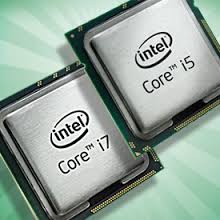
C++ began as an expanded version of C. The C++ extensions were first invented by Bjarne Stroustrup in 1979 at Bell Laboratories in Murray Hill, New Jersey. He initially called the new language “C with Classes.” However, in 1983 the name was changed to C++.Although C was one of the most liked and widely used professional programming languages in the world, the invention of C++ was necessitated by one major programmingfactor: increasing complexity. Over the years, computer programs have become
larger and more complex.
Even though C is an excellent programming language, it has its limits. In C, once a program exceeds from 25,000 to 100,000 lines of code, it becomes so complex that it is difficult to grasp as a totality. The purpose of C++ is to allow this barrier to be broken. The essence of C++ is to allow the programmer to comprehend and manage larger, more complex programs
Object-Oriented Programming:
Since object-oriented programming (OOP) drove the creation of C++, it is necessary to understand its foundational principles. OOP is a powerful way to approach the job of programming. Programming methodologies have changed dramatically since the invention of the computer, primarily to accommodate the increasing complexity of programs.
For example, when computers were first invented, programming was done by toggling in the binary machine instructions using the computer’s front panel. As long as programs were just a few hundred instructions long, this approach worked. As programs grew, assembly language was invented so that a programmer could deal with larger, increasingly complex programs, using symbolic representations of the machine instructions. As programs continued to grow, high-level languages were introduced that gave the programmer more tools with which to handle complexity.
The first widespread language was, of course, FORTRAN. Although FORTRAN was a very impressive first step, it is hardly a language that encourages clear, easy-to understand programs.
The 1960s gave birth to structured programming. This is the method encouraged by languages such asCand Pascal. The use of structured languages made it possible to write moderately complex programs fairly easily. Structured languages are characterized by their support for stand-alone subroutines, local variables, rich control constructs, and their lack of reliance upon the GOTO. Although structured languages are a powerful tool, even they reach their limit when a project becomes too large.
Object-oriented programming took the best ideas of structured programming and combined them with several new concepts. The result was a different way of organizing a program. In the most general sense, a program can be organized in one of two ways: around its code (what is happening) or around its data (who is being affected). Using only structured programming techniques, programs are typically organized around code. This approach can be thought of as “code acting on data.”
For example, a program written in a structured language such as C is defined by its functions, any of which may operate on any type of data used by the program. Object-oriented programs work the other way around. They are organized around data, with the key principle being “data controlling access to code.” In an object-oriented language, you define the data and the routines that are permitted to act on that data. Thus, a data type defines precisely what sort of operations can be functional to that data.
Encapsulation:
Encapsulation is the mechanism that binds together code and the data it manipulates, and keeps both safe from outside interference and misuse. In an object-oriented language, code and data may be combined in such a way that a self-contained “black box” is created. When code and data are linked together in this fashion, an object is created.
In other words, an object is the device that supports encapsulation. Within an object, code, data, or both may be private to that object or public. Private code or data is known to and accessible only by another part of the object. That is, private code or data may not be accessed by a piece of the program that exists outside the object. When code or data is public, other parts of your program may access it even though it is defined within an object. Typically, the public parts of an object are used to provide a controlled interface to the private elements of the object.
For all intents and purposes, an object is a variable of a user-defined type
Polymorphism:
Object-oriented programming languages support polymorphism, which is characterized by the phrase “one interface, multiple methods.” In simple terms, polymorphism is the attribute that allows one interface to control access to a general class of actions. The specific action selected is determined by the exact nature of the situation. A real-world example of polymorphism is a thermostat. No matter what type of furnace your house has (gas, oil, electric, etc.) , the thermostat works the same way. In this case, the
Thermostat (which is the interface) is the same no matter what type of furnace (method) you have. For example, if you want a 70-degree temperature, you set the thermostat to 70 degrees. It doesn’t matter what type of furnace actually provides the heat. This same principle can also apply to programming.
Inheritance
Inheritance is the process by which one object can acquire the properties of another object. This is important because it supports the concept of classification. If you think about it, most knowledge is made manageable by hierarchical classifications. For example, a Red Delicious apple is part of the classification apple, which in turn is part of the fruit class, which is under the larger class food.









